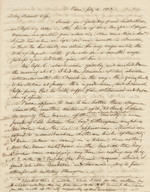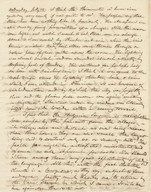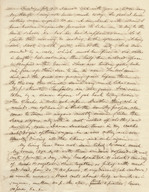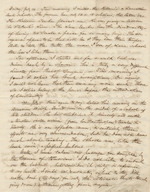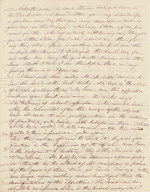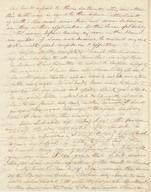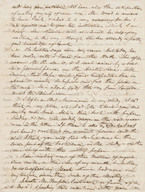Letters Packet 8 (b)
| Dublin Core Alanı | Değer | Dil |
|---|---|---|
| dc.provenance | Amerikan Bord Heyeti, İstanbul - American Board, Istanbul | - |
| dc.contributor | Riggs, Elias | - |
| dc.coverage.spatial | Varna | - |
| dc.coverage.spatial | Constantinople (Istanbul, Turkey) | - |
| dc.coverage.spatial | Steamer in the Black Sea | - |
| dc.coverage.spatial | Bournabat | - |
| dc.coverage.spatial | Bebek (Istanbul, Turkey) | - |
| dc.coverage.spatial | Pera | - |
| dc.coverage.spatial | Philadelphia | - |
| dc.coverage.spatial | “Ala-shehr” (Alaşehir) | - |
| dc.coverage.spatial | Chekirgeh (Çekirge) | - |
| dc.coverage.spatial | Brousa (Bursa, Turkey) | - |
| dc.coverage.spatial | Broussa (Bursa, Turkey) | - |
| dc.creator | Amerikan Bord Heyeti (American Board) | - |
| dc.date.accessioned | 2018-09-11T11:27:33Z | - |
| dc.date.available | 2018-09-11T11:27:33Z | - |
| dc.date.issued | 1839 | - |
| dc.date.issued | 1846 | - |
| dc.identifier | ABARPC008B | - |
| dc.identifier.uri | https://archives.saltresearch.org/handle/123456789/46785 | - |
| dc.description | 19 letters from Elias to Martha, including a numberwritten on full-sized stationery from earlier years (starting 1843). Elias to Martha from Varna, July 1843. He writes: “I find that the Bulgarian language is not spoken here except by the peasants from the villages. The villages also are distant, no one being nearer than three hours. They are also small, the largest being said to contain only 60 or seventy huts. The people (as might be anticipated) uninstructed, and of course no call at present for books. Nor should I have among them any good opportunity of studying the language. All this, with the fact that the climate is a heavy one, as they say, subject to fever and ague, pretty much decides me to return by the same steamer by which I came [from Constantinople].” In Varna he visits Greek schools and an Armenian bishop. By July 22 he has returned to Constantinople and begun taking Bulgarian language lessons each morning from a man in Arnavutköy. Nov. 1839, Elias writes Martha (in Smyrna) from a steam ship, having left Beirut the previous day. Then an 1843 letter from Elias in Bebek to Martha on highly decorative stationery. May 1842, Elias writes Martha from Philadelphia (“Ala-shehr”/Alaşehir): “I must write you a line from this interesting spot. …We were in serious danger of being robbed, but from this as from all the dangers of our way we were mercifully preserved. It would seem that the news of our coming had gone that morning before us, and when we came to our resting place at noon we found ourselves in the midst of more than thirty of about the wildest and most barbarous people that either of us ever saw. Some of them were villagers and some had arms. They accosted us with the statement that a robbery had just been committed on the road a little beyond this place. But their stories did not at all agree. Besides some of them went into the woods and returned pretending to be frightened and saying that the robbers were there. I need not go through with all the particulars. We were satisfied that some if not all of them were in league with the robbers and had formed a conspiracy to rob us. Isaiah displayed great firmness. He exhibited our firman and teokere and told them that if anything occurred the government would hold the villages responsible. (This is according to Turkish law) The Aga of the nearest village which was three miles distant was there and when he saw us demand his name and write it down and observed our coolness and I’s boldness, his lips quivered and he seemed much alarmed. He went away (doubtless into the woods to consult with the bandits) and soon returned in haste telling us to take one man with us as a guard and nothing would happen to us. The man accordingly went with us a mile or two, repeatedly turning back and saying that he had gone far enough. But we insisted upon his going further. We had no doubt that he was an accomplice of the robbers.” … “There are no ruins here to compare with those we have seen. Those of Hierapolis and Laodicea are grand. But those cities are now scenes of utter desolation – entirely without inhabitants while in Philadelphia, since the day when our Saviour commanded those who had here ‘kept the word of his patience,’ there has never ceased to be a nominally Christian church. It is indeed an interesting spot to the Christian. Oh that the spirit of those ancient disciples might be shed abundantly on their degenerate descendants and successors.” In his 1843 letters to Martha Elias repeatedly cautions her to take care of her health. Elias to Martha from Bebek, Aug 28 1843: “On Tuesday last I witnessed what I could wish might never be witnessed again (but I fear the day of Musselman fanaticism is not yet gone by) – the body of a man put to death for renouncing the Mohammedan religion. His body lay exposed to public view for three days, in a public street of the city – and posted up near it was a Turkish notice, stating that the man was originally an Armenian, a shoemaker by the name of Joachim, that he had embraced the Mohammedan religion, taking the name of Mehemet, that he had now renounced the true faith and that consequently his death became necessary according to the Holy Law, that a judicial sentence had accordingly been pronounced against him, but that still the alternative was offered him of again embracing of the faith of Islam, that refusing to do so his death became necessary, an order was issued, and that accordingly the man had been put to death and sent to perdition. The man’s body was dressed in Frank clothes, and his cap placed on his back. This latter circumstance is said to be contrary to former usage, and would seem intended for effect – as much as to say to the Turks that if a man deserts the Mohammedan religion even foreign influence shall not save him. We hear that two of the Ambassadors (Eng & Rus) sent in urgent letters to the Porte requesting that the man might not be put to death, but in vain.” June 1846, Elias in Constantinople writes Martha in Smyrna, and Elizabeth is with him, while Edward is with her. In Sept 1843 Elias takes the baths at Bursa for his health. | - |
| dc.format | - | |
| dc.format | Handwriting | - |
| dc.language | English | - |
| dc.rights | Open Access | - |
| dc.subject | Missions | - |
| dc.subject | Missionaries | - |
| dc.subject | Schools | - |
| dc.title | Letters Packet 8 (b) | - |
| dc.type | Mektup - Letter | - |
| dc.note | Elias's letters to Martha, 1839, 1843, 1846. Handwritten in ink on full-sized (9x11 or A4) sheets. | - |
| dc.location | SALT Research | - |
| dc.identifier.projectcode | ABA | - |
| dc.catalogedby | ARIT & SALT Research staff | - |
| dc.date.cataloged | 2006-2010 | - |
| dc.date.acquisition | 2010-12-00 | - |
| dc.format.numberofscans | 259 (total pages for entire packet 8), b has 19 letters | - |
| dcterms.accrualMethod | On deposit at SALT Research from UCC and ARIT | - |
| dc.rights.holder | United Church of Christ (UCC), American Research Institute in Turkey (ARIT), SALT Research | - |
| Koleksiyonlar | Correspondence | |
Dosyalar

